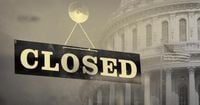On October 1, 2025, the United States government entered yet another shutdown, this time with health care access and affordability for millions of Americans hanging in the balance. In the days since, the political standoff has only intensified, with Democrats and health care advocates warning that the consequences for working families could be devastating if a resolution is not found soon.
Speaker Emerita Nancy Pelosi, joined by Congressmen Jared Huffman and Kevin Mullin, as well as Bay Area health care leaders, addressed the crisis at San Francisco’s North East Medical Services Clinic in Chinatown on October 2. According to Pelosi, the shutdown—driven by President Donald Trump and congressional Republicans—threatens to strip away Affordable Care Act (ACA) enhanced premium tax credits that keep health coverage within reach for millions. Without swift congressional action, "hundreds of thousands will lose their health care and millions more will face skyrocketing premiums—including nearly 26,000 people in San Francisco alone," Pelosi said, as reported by her office.
The numbers are staggering. Current estimates project that, without an extension of the ACA’s premium tax credits, out-of-pocket premiums for Americans using the ACA could rise by over 100%. In fact, as AFT reported, premiums are expected to increase by 114% nationwide and up to 95% in rural areas. This would mean rising insurance costs not just for those on the ACA, but for all Americans, as increased costs ripple through the system.
At the heart of the funding fight are Republican efforts to enact the largest cuts in history to Medicaid and the ACA—threatening health care for 15 million Americans, according to AFT. Pelosi and her Democratic colleagues have been vocal in their opposition. "We could not vote for a bill that contained within it, and the other legislation they passed this year, cutting a trillion dollars out of Medicaid and SNAP," Pelosi told attendees at the press conference. She went on to detail the proposed cuts: a trillion dollars from Medicaid and SNAP (the Supplemental Nutrition Assistance Program), several hundred billion more from SNAP, and $600 billion from Medicare.
Pelosi’s criticism didn’t stop at health care. She accused Republicans of prioritizing tax cuts for the wealthy over benefits for America’s working families, seniors, and children. "They would rather take food out of the mouths of babies so they can give a tax cut to the richest people in our country who really don't need it," she said, highlighting cuts to programs like WIC (Women, Infants, and Children) and Meals on Wheels.
The shutdown’s impact has been far-reaching. Government services for Native Americans have paused, with many members of the Federation of Indian Service Employees furloughed or working without pay. While some programs—such as student aid, Medicare, Medicaid, the military, TSA, and the U.S. Postal Service—are not affected by the shutdown, the disruption to essential services has been palpable. Employees in agencies like the Bureau of Indian Affairs and the Bureau of Trust Funds Administration, deemed “essential,” must continue working without pay until the shutdown ends.
Meanwhile, the Trump administration has threatened mass layoffs of federal employees as a means to exert leverage over Democrats. As Government Executive reported, the Office of Management and Budget (OMB) issued a memo instructing agencies to initiate reductions in force (RIFs) during the shutdown. In response, the American Federation of Government Employees (AFGE) and the American Federation of State, County and Municipal Employees (AFSCME) filed lawsuits challenging the legality of these layoffs, arguing that they violate the Antideficiency Act and agencies’ authorizing statutes.
AFGE National President Everett Kelley did not mince words, stating, “Announcing plans to fire potentially tens of thousands of federal employees simply because Congress and the administration are at odds on funding the government past the end of the fiscal year is not only illegal—it’s immoral and unconscionable.” He noted that more than a third of federal employees are military veterans, emphasizing the public service and dedication of those now facing uncertainty.
For many, the current crisis has echoes of the 2018-2019 partial government shutdown, the longest in U.S. history at 35 days, also under President Trump. This time, the standoff appears poised to last even longer, with both sides digging in. According to AFT, President Trump has actively encouraged congressional Republicans not to negotiate with Democrats on the budget, insisting in September, “don’t even bother dealing with them,” effectively cutting out half the country’s elected representatives from the process.
The consequences of inaction are already being felt. Health clinics and rural hospitals face closure or severe cutbacks, as reported by AFT. Millions stand to lose their health insurance, and those who keep it could see premiums rise by thousands of dollars. Randi Weingarten, president of the American Federation of Teachers, summed up the frustration: “The American people are always the ones hurt when the government shuts down. It locks out workers and hurts Americans who need government services.”
Democrats, for their part, say they are united in their desire to reopen the government and protect health care for working families. Pelosi made clear that her party would not support a budget that slashes Medicaid, SNAP, and Medicare while giving tax cuts to the wealthy. She called for Republicans to "quit trying to make the shutdown even worse and instead come back to the negotiating table so we can reach a bipartisan agreement to open up the government." Pelosi also underscored the importance of public mobilization, recalling the grassroots efforts that helped pass the ACA and vowing to continue the fight to protect health care access.
As the shutdown drags on, legal battles over the threatened layoffs are unfolding in federal courts. The unions’ lawsuits argue that the OMB’s actions are not only illegal but also based on a fundamental misunderstanding of how agencies are funded. The Antideficiency Act, they contend, does not allow for layoffs during a lapse in appropriations, and a 2019 update requires back pay for all furloughed or unpaid employees once funding is restored.
With the shutdown now several days old and the prospect of a swift resolution uncertain, the stakes for working families, federal employees, and the broader health care system continue to rise. As Pelosi put it, the fight is about "who are you here for? America’s working families or the richest people in our country?" For now, the answer remains mired in political gridlock, with millions of Americans watching and waiting for relief.
As the debate rages on, the lived realities of those affected—patients facing higher premiums, federal workers without pay, and communities losing vital services—underscore the urgent need for a solution. Whether lawmakers can bridge the divide and put the interests of ordinary Americans first remains to be seen.






